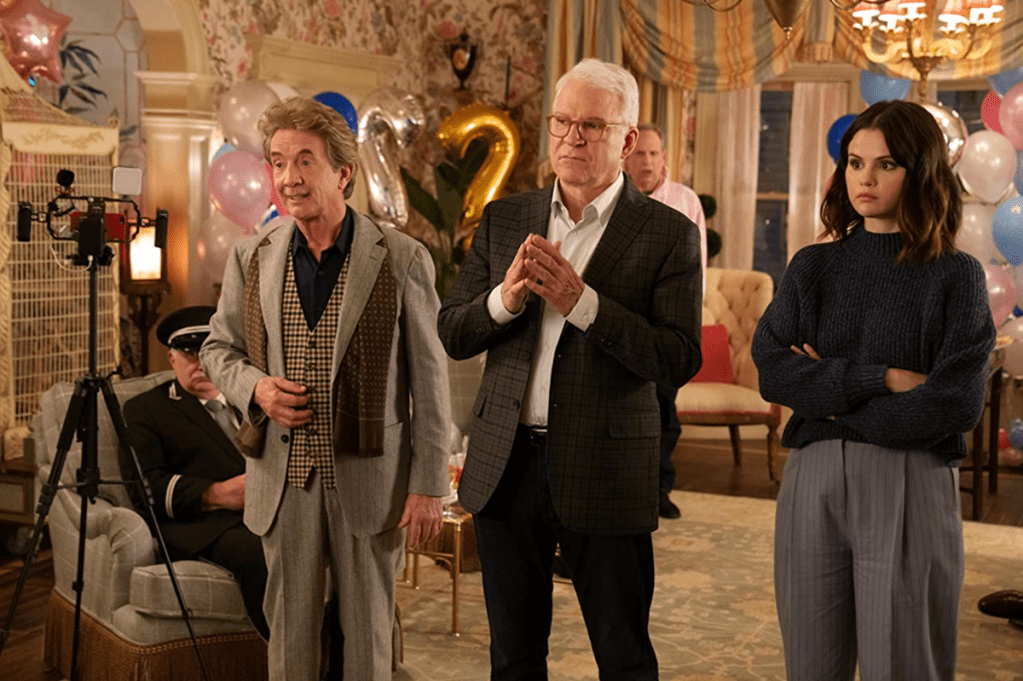We live in an age in which everything sounds so grave. Our democracy is in peril! Covid numbers are going up!
It’s a cause for rejoicing, then, that one of the best new series treats that most serious of subjects — namely, homicide — with such a deft and delightful touch. Hulu’s Only Murders in the Building, which was created by co-star Steve Martin and John Hoffman, expands the honorable tradition of the Thin Man series and Woody Allen’s Manhattan Murder Mystery, movies that used the murder-mystery format as a pretext for their sophisticated urbanites to poke around in other people’s residences and speculate wittily on who done it. The series wraps up its second season on Tuesday.
Despite its old-fashioned antecedents — and a major subplot named for the Hardy Boys novels — Only Murders in the Building drags the genre into the twenty-first century with scripts that incorporate all the tools favored by contemporary amateur sleuths, including text messages, internet searches and, most significantly, podcasts — the last of which is the medium that binds together the show’s unlikely principal trio: past-his-sell-by-date TV star Charles-Haden Savage (Martin), jinxed theatrical guru Oliver Putnam (Martin Short) and moody twenty-something Mabel Mora (Selena Gomez).
Charles, Oliver and Mabel are among the numerous undistinguished residents of the Arconia — but other than the coincidence of their having found their way to the same big, imposing, notably unfriendly apartment building in New York, the three would have no reason to socialize beyond small talk, through gritted teeth, in the elevator. Independent of each other, however, each is a devotee of the true-crime podcast All Is Not OK in Oklahoma, which, as hosted by Cinda Canning (Tina Fey), is an accurate parody of what has become a ubiquitous form of media.
Equally accurate is the show’s insight about the nature of podcast consumption: the way that, on the one hand, we retreat into ourselves — sitting down in a comfy chair and shutting out the world — when settling in for a new episode, but, on the other, the way that, upon finding strangers with the same addiction, connections can emerge. Such is the case when Charles, Oliver and Mabel learn of their like-minded enthusiasm for All Is Not OK in Oklahoma — an enthusiasm that turns out to be a kind of gateway drug for more serious (and legally questionable) sleuthing when Tim Kono, a particularly unpopular neighbor in the Arconia, is found to be dead.
Naturally, the trio attempts to wring their own podcast from their investigation into Kono’s demise, an effort undertaken by Charles and Oliver to resuscitate their flagging careers — “It’s so PBS-y,” Oliver says in a critique of Charles’s delivery. “Like a Ken Burns documentary on the history of boredom” — and by Mabel for a host of private reasons that are gradually disclosed.
The labyrinthine plotting gives rise to many memorable moments; at various points in the first season, a cat fancier becomes our heroes’ favored suspect — as does the artist Sting (playing himself in a cameo) — and Cinda gives a sarcastic shout-out to the neophyte podcasters on Jimmy Fallon’s show. In the second season, the death of Arconia board president Bunny sets off a fresh wave of speculation, accusation and podcasting. The accumulation of details about the victims — and their would-be killers — is less satisfying than the individual details themselves; it’s the atmosphere of secrets and clues that appeals. Through imaginative flashbacks and fantasy sequences, the show gets across the way a mystery can fire our synapses. In some ways, the series is about itself: the fun of following along with an investigation, however grisly.
Much of the fun, of course, also comes from these talented, affable actors. Martin has evolved into an agreeably owlish, peevish presence, far from both the wild-and-crazy guy of The Jerk and the dad you wish you had in Father of the Bride, while Short alternates between his usual up-with-people disposition and a more forlorn, pitiful interior. For her part, Gomez builds on the cynical, quick-on-the-draw persona she showed off in Woody Allen’s A Rainy Day in New York. Few could deny the pleasure of watching the trio traipse around, happen upon facts, stumble over false leads, make and withdraw accusations — and get in deeper and deeper.
So, come on, stop taking things so seriously. Maybe it’s still bad form to laugh at murder, but you can laugh without apology or regret at the shenanigans in Only Murders in the Building.


















